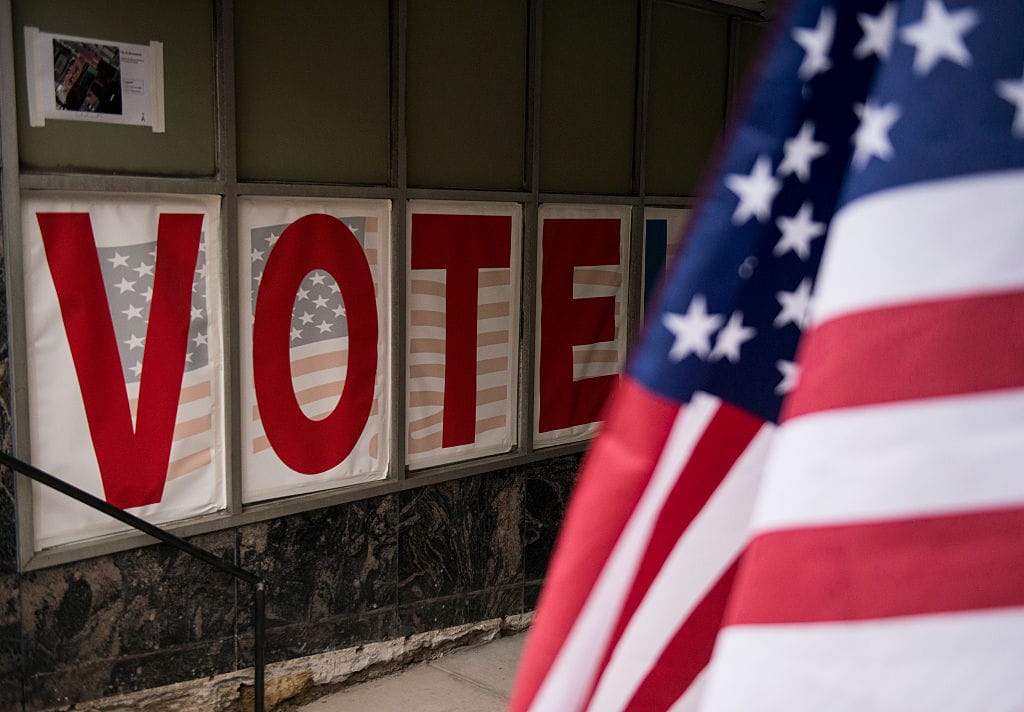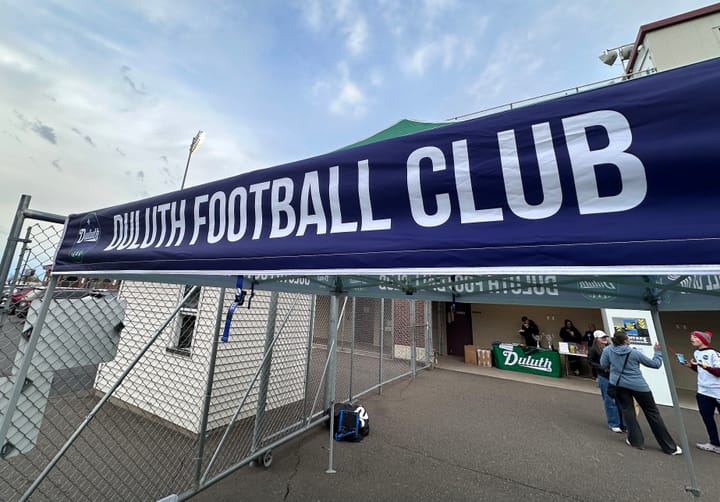Red and blue state divide grows even wider in 2023’s top voting and election laws

By Zachary Roth, Minnesota Reformer
Next year’s elections are still 16 months away. But for voters, perhaps the most important developments took place during the first half of this year — when states drafted and passed the legislation that will shape how those contests are run.
“The rules that will govern the 2024 election are being written today,” said Megan Bellamy, vice president for law and policy at the Voting Rights Lab, which tracks state elections legislation and works to protect access to the ballot. “Already, based on what we’ve seen, it will look different from the 2020 election for many voters, all the way from how they vote to how their ballots are counted.”
With all but a few state legislatures now having wrapped up their sessions, it’s clear that for voters in some states, it will be easier to cast a ballot, while in others, it will be harder.
According to a tally by the Brennan Center for Justice, 21 bills that restrict voting or interfere with election administration were either signed into law, or await the governor’s signature, as of May 29. Meanwhile, 23 bills that expand access to voting became law or are on governors’ desks.
Red states and blue states “are moving in opposite directions in the regulation of election administration,” the election law scholar Edward Foley wrote recently, “with red states becoming more restrictive as blue states are becoming more expansive.”
To those who want to see Washington do more to protect the franchise for all Americans — a major democracy reform bill passed the U.S. House in 2021 but stalled in the Senate amid Republican opposition — that’s a troubling dynamic.
“Unfair and unequal, depending on who you are and where you live — that’s really the trend,” said Christina Harvey, the executive director of Stand Up America, a progressive pro-democracy group. “As a result of the federal government failing to do anything to protect voting rights, to expand voting rights, to create basic minimums when we’re thinking about voter access, states have gone their own ways.”
But, unlike in some recent years, when sweeping elections overhauls in several states grabbed national headlines and sparked energetic pushback, this year’s key elections laws, especially the restrictive ones, have mostly been more targeted at specific parts of the process.
Florida imposed tough new rules on voter registration groups, while Texas looked to exert control over elections in a single county.
Perhaps as a result, these measures have collectively received somewhat less scrutiny than that earlier wave. But they’re still set to shape the voting experience — in some cases, determining who casts a ballot and who doesn’t — in what’s likely to be another close, and hugely consequential, national election.
Here are seven of the state elections measures — all either signed into law already, or likely to be — that figure to have the biggest impact, based on the number of people they might affect, and the size and competitiveness of their states.
Three of these bills restrict voting, one interferes with election administrators’ authority, and three expand access to the ballot.
Ohio’s voter ID law
The measure was signed into law by Republican Gov. Mike DeWine in January, and was in effect for the state’s local elections in April and May.
It requires that in-person voters show a non-expired ID that includes their name and photograph. Previously, voters could show documents including utility bills, bank statements, paychecks or veteran ID cards.
The law also imposes several other restrictions, including: eliminating early voting on the Monday before Election Day and distributing those hours throughout the previous week; limiting the number of absentee ballot drop boxes to one per county; shortening the amount of time that voters have to “cure” provisional ballots, by providing proof of identity or residence, to four days; and shortening the deadline for mail-in voters to send in their application for a mail ballot to seven days before Election Day.
DeWine has said the law was needed to address concerns about election integrity, though he has acknowledged Ohio does a “good job” running elections.
On the day the law was signed, it was challenged in court by the law firm of Democratic election lawyer Marc Elias. The measure, charged the lawsuit, “will severely restrict Ohioans’ access to the polls — particularly those voters who are young, elderly, and Black, as well as those serving in the military and others living abroad.”
The suit noted that of the people referred by the secretary of state’s office to the attorney general for investigation into potential fraud, not a single one has been for in-person voter impersonation — the only kind of fraud that the ID requirement might stop.
Florida’s voter registration law
This law, signed by Republican Gov. Ron DeSantis in May, creates new restrictions for third-party groups that work to register new voters.
The measure quintuples the maximum fine — from $50,000 to $250,000 — for failing to submit completed registration applications to election administrators on time, while moving up the deadline for turning in the forms from 14 days to 10 days. It bars noncitizens and those convicted of certain felonies from handling applications, forcing registration groups to conduct costly background checks. And it bars groups from keeping contact information from registration applicants, making it harder to turn them out to vote on Election Day.
The law follows a 2021 Florida measure that had already created new rules for voter registration groups, including requiring that registration applications must be submitted to the county where the voter lives.
Republicans have said the changes are aimed at bolstering election security.
But the League of Women Voters and other groups have sued to block the law. In an April letter to lawmakers, a coalition of voting rights groups wrote that the new bill would lead to “a gutting of community-based voter registration in Florida.”
“Taken together, these changes create a framework that would make it extremely difficult for nonprofit voter registration organizations to operate,” the groups wrote. “We believe this framework would have the harshest impacts on smaller organizations who are closest to the communities they serve.”
Many voter registration groups primarily aim to serve communities of color or other marginalized populations.
North Carolina’s omnibus voting law
This legislation passed the state Senate June 22. It hasn’t yet received a vote in the House, but Republicans hold veto-proof majorities in both chambers, and they appear unified around the measure. That means it’s likely to ultimately become law, though changes could be made. North Carolina’s legislative session is scheduled to run through August.
In its current form, this omnibus bill would impose a host of new restrictions, including: disqualifying mail-in ballots not received by election night (currently, they must only be postmarked by then); allowing voters to challenge any mail-in ballot cast in their county (currently, the voter must be in the same precinct); requiring that voters who register and vote on the same day cast a provisional ballot, to be counted if their address is verified; and barring state and local elections offices from accepting private funds.
If the bill makes it harder for Democratic-leaning groups like racial minorities and students to vote, it could boost Republicans next year. In 2020, Donald Trump won North Carolina by just 1.3 percentage points, the smallest margin of any state he carried.
In writing the bill, lawmakers met with Cleta Mitchell, an election lawyer who played a lead role in Trump’s bid to overturn the 2020 election, and who has suggested that it’s too easy for North Carolina college students to vote.
Advocates say the bill’s provision on same-day voter registration, in particular, could create hurdles for students, who use same-day registration at high rates.
And one county elections director said the plank that bars private funding of elections, on top of an existing lack of election funding, would make it all but impossible to do voter outreach and improve turnout.
“If they aren’t going to allow outside money, and they aren’t going to fund elections appropriately, then we’re going to have a hard time doing our jobs,” said the director.
Texas’ election authority law
This Texas bill, which was signed into law by Republican Gov. Greg Abbott in mid-June, would allow the secretary of state to order a new election in Harris County under certain circumstances.
Harris County, which contains Houston, is the state’s most populous county and a Democratic stronghold.
The law allows the state to order new elections if there is “good cause to believe” that at least 2 percent of polling places ran out of usable ballots, regardless of whether the ballot shortage affected the election.
It’s a response to the 2022 midterms, in which some voting machines in the county malfunctioned and some polling places — around 20 out of 782, according to a Houston Chronicle investigation — ran out of ballots. Some Republican candidates seized on the problems to argue for an election redo.
Democrats have warned that the bill could allow the state to overturn elections if it doesn’t like the results. Harris County has said it plans to sue if the bill is enacted.
In recent years, Texas lawmakers have sought to restrict the power of local governments on issues from the environment to worker pay to elections. A separate bill, also on the governor’s desk, would eliminate the position of Harris County election administrator, and restore a system in which the county clerk and tax assessor control the county’s elections.
Minnesota’s automatic voter registration law
Minnesota already has one of the highest voting rates in the country, but this omnibus bill, known as the Democracy for the People Act and signed into law by Democratic Gov. Tim Walz in May, aims to make casting a ballot even easier.
In last fall’s elections, Democrats gained full control of state government. The law was passed along party lines in both chambers.
The measure’s centerpiece is the creation of an automatic voter registration system, allowing Minnesotans to be automatically added to the rolls, unless they decline, whenever they renew a driver’s license, apply for Medicaid or come in contact with other state agencies. Minnesota becomes the 23rd state to offer automatic registration.
The law also creates a permanent mail voting list, meaning voters can be automatically sent a mail ballot for every election, without having to apply each time. And it allows 16- and 17-year-olds to pre-register to vote, as well as increasing penalties for voter intimidation and deception.
“In the North Star State, we are showing the country what a strong, inclusive, multi-racial democracy looks like,” said Rep. Emma Greenman, the bill’s author.
The impact of the law, and especially the automatic registration plank, will be boosted by a separate measure that went into effect in June, restoring voting rights to over 50,000 Minnesotans who have completed their sentences but remain on probation or parole.
“The combination of automatic voter registration getting passed along with rights restoration means that far more of those 50,000 people will actually end up being registered to vote,” said Harvey of Stand Up America, which worked to build support for both laws. “They won’t necessarily have to do it proactively.”
Editor’s note: You can read a detailed piece on the changes to election law the Legislature made this year, in this previous Reformer story.
Michigan’s early voting package
Technically, this isn’t one bill but rather a package of eight separate measures. But they can be grouped together because they all implement different parts of Proposal 2, a ballot measure overhauling Michigan’s elections that was overwhelmingly passed by voters last fall.
The bills are at different stages in the process. But with Democrats now enjoying full control of state government, they’re all expected to be approved in some form, and to be signed into law by Democratic Gov. Gretchen Whitmer.
On June 14, both chambers passed bills to implement perhaps the most important plank of Proposal 2: the creation of a new system of early voting, with at least nine days of early voting statewide, and polls open each day for at least eight hours.
Michigan’s current early voting process is cumbersome. Voters have to apply for an absentee ballot, which they can fill out at a clerk’s office. Under the legislation, voters could vote in-person, as they can on Election Day.
Counties and cities would be given flexibility in how they run their systems, including by deciding whether to offer multiple polling places or a single voting center, and by being able to offer more than the nine-day minimum if they choose. Detroit has said voting will be open three weeks before Election Day.
The package also includes legislation to implement the other provisions in Proposal 2: the creation of a permanent mail ballot list, allowing voters to automatically receive a mail ballot for every election without having to apply each time; a requirement that counties provide ballot drop boxes; and, at a time when some states are barring election offices from using private money, an explicit statement that these funds are allowed.
New York’s mail voting law
The country’s third-largest state ranked just 42nd in voter turnout in 2020. The Early Mail Voter Act, which was passed June 9 and allows mail voting without an excuse, could help increase voting rates if signed into law by Democratic Gov. Kathy Hochul.
That could boost Democrats. Though New York isn’t usually competitive statewide, several close congressional races won by Republicans helped the GOP narrowly regain control of the U.S. House in 2022, and those seats are likely to be closely fought again next year.
New York’s constitution bans absentee voting without an excuse. During the pandemic, the state temporarily expanded the excuses that can be used to include the risk of spreading COVID-19, and 1.7 million New Yorkers voted by mail. But that accommodation expired at the end of last year.
In 2021, voters rejected a ballot initiative that would have amended the constitution to allow no-excuse absentee voting, after a concerted conservative campaign against the measure.
The new law gets around the constitutional ban by, essentially, creating a parallel system of early voting by mail — in which voters can apply to pick up a ballot up until the day before Election Day — to run alongside the existing absentee ballot system, for which an excuse is still required.
Still, a constitutional challenge is possible if the bill becomes law.
“Allowing New Yorkers to vote by mail increases voter turnout in harder to reach populations, including young people and voters of color,” said Common Cause New York in a statement released the day the bill passed. “(N)ot only is this absolutely legal under our constitution, but the right thing to do.”
Minnesota Reformer is part of States Newsroom, a network of news bureaus supported by grants and a coalition of donors as a 501c(3) public charity. Minnesota Reformer maintains editorial independence. Contact Editor Patrick Coolican for questions: info@minnesotareformer.com. Follow Minnesota Reformer on Facebook and Twitter.



Comments ()